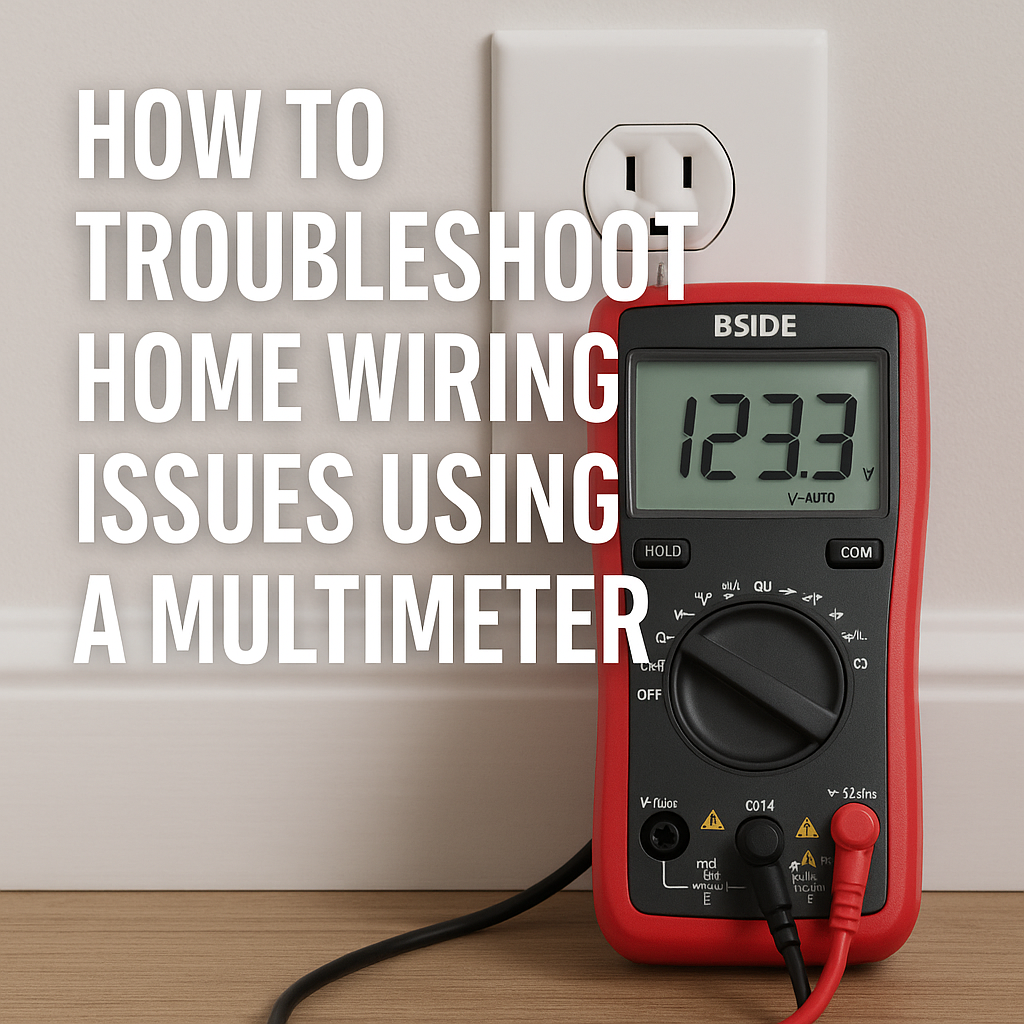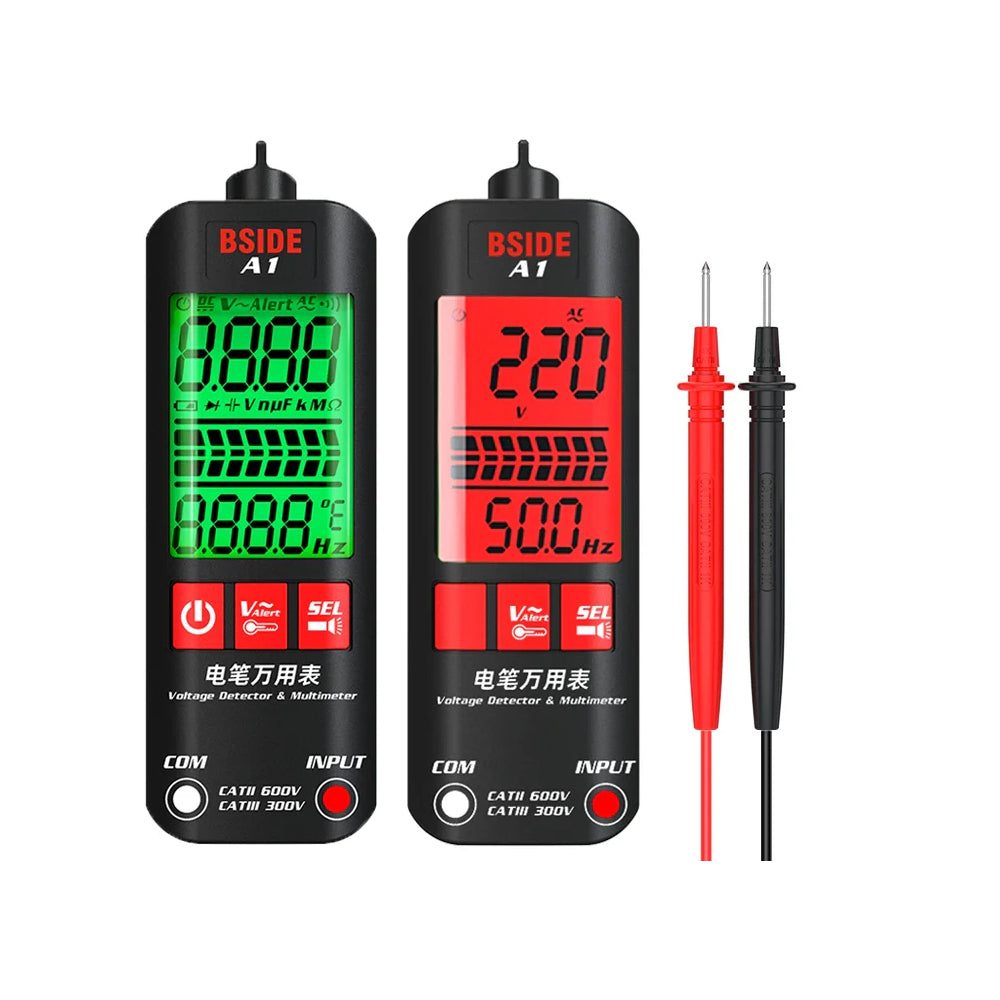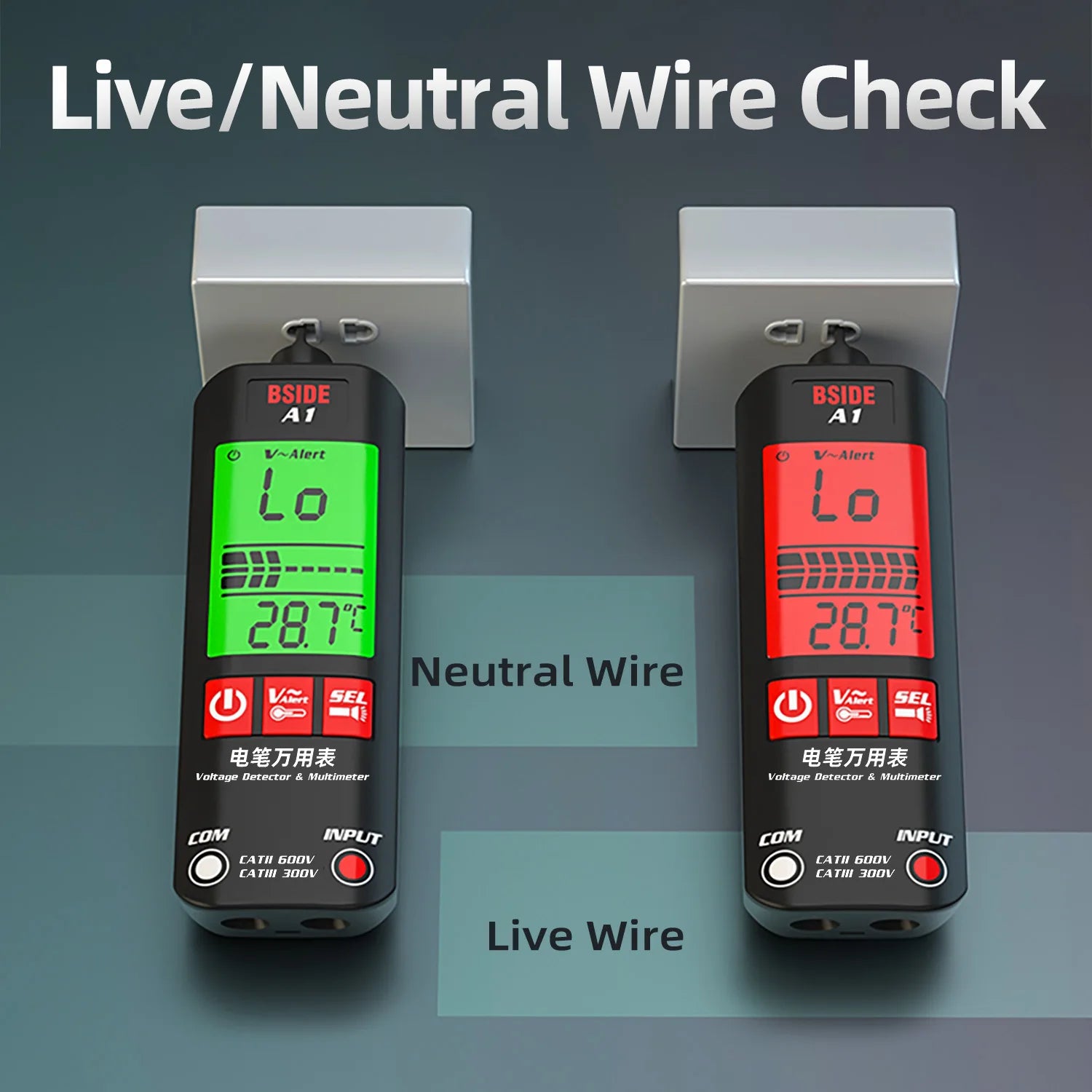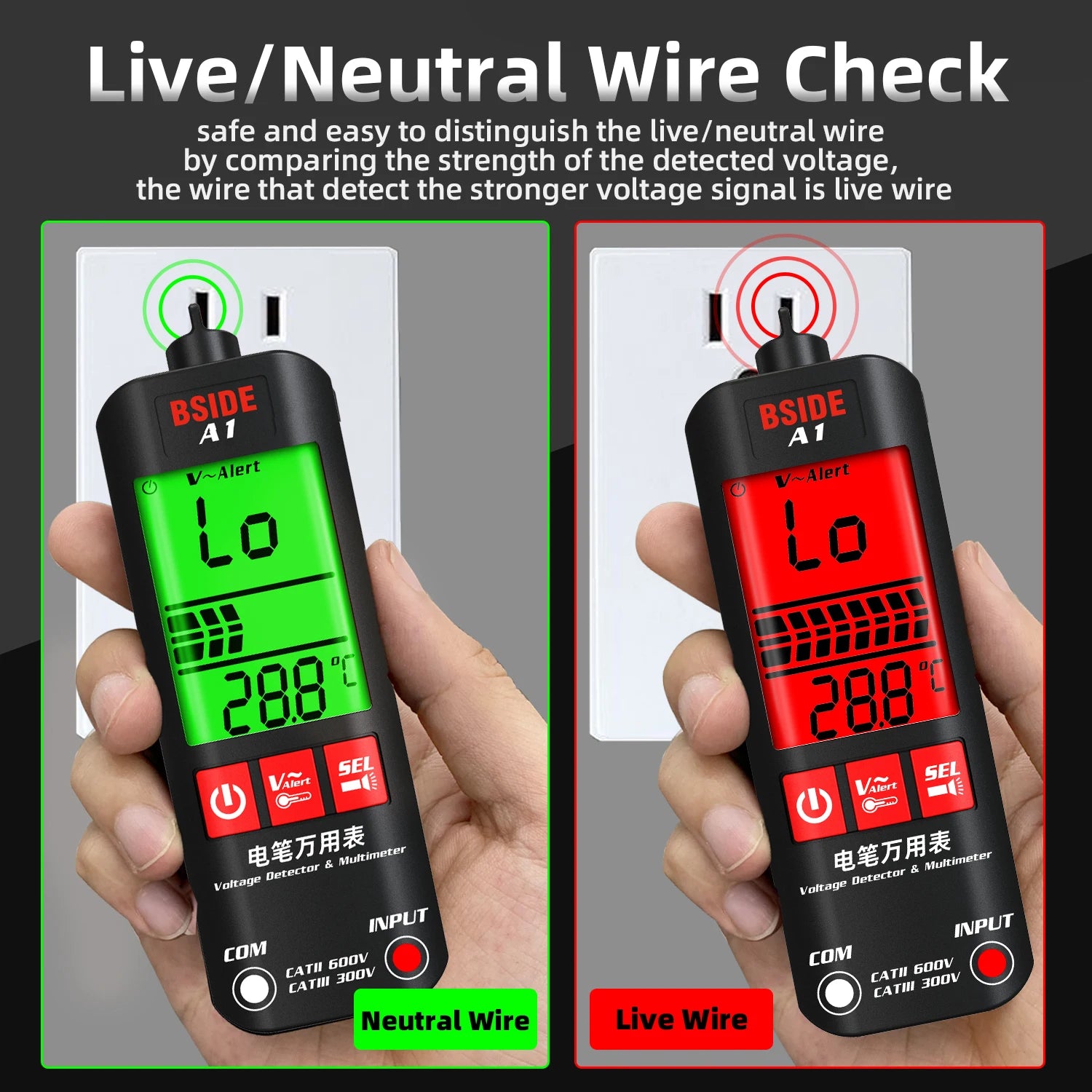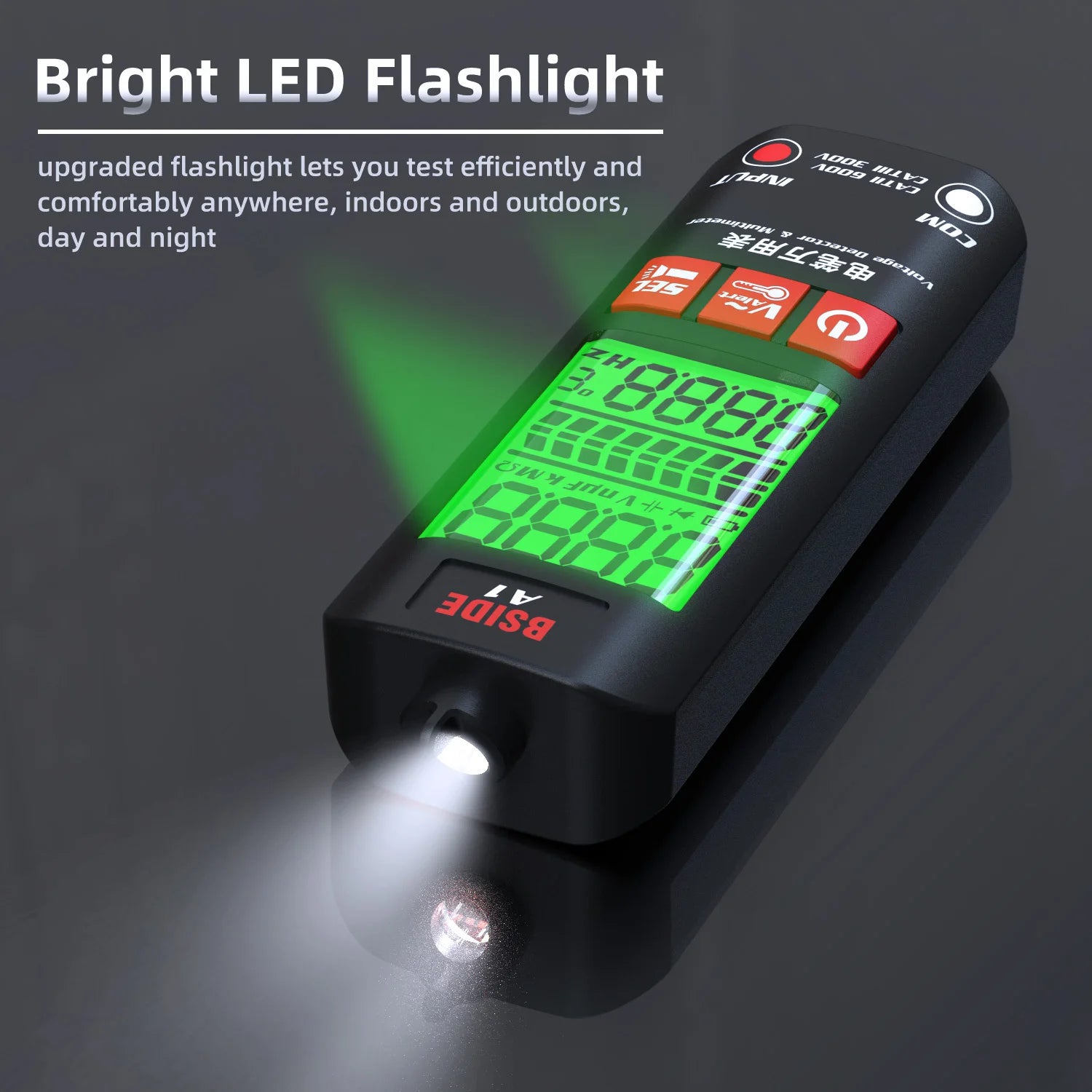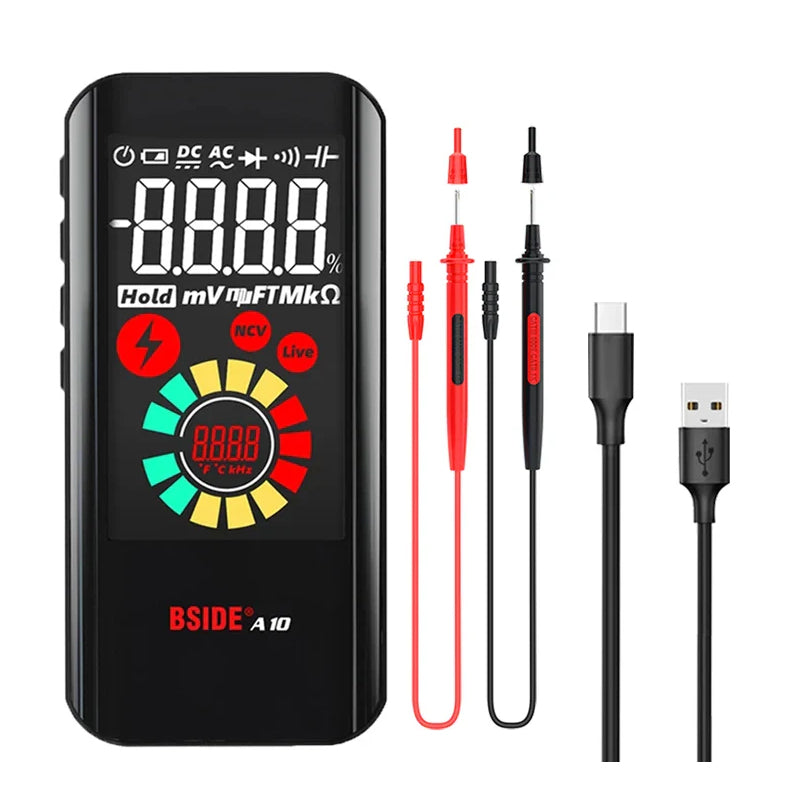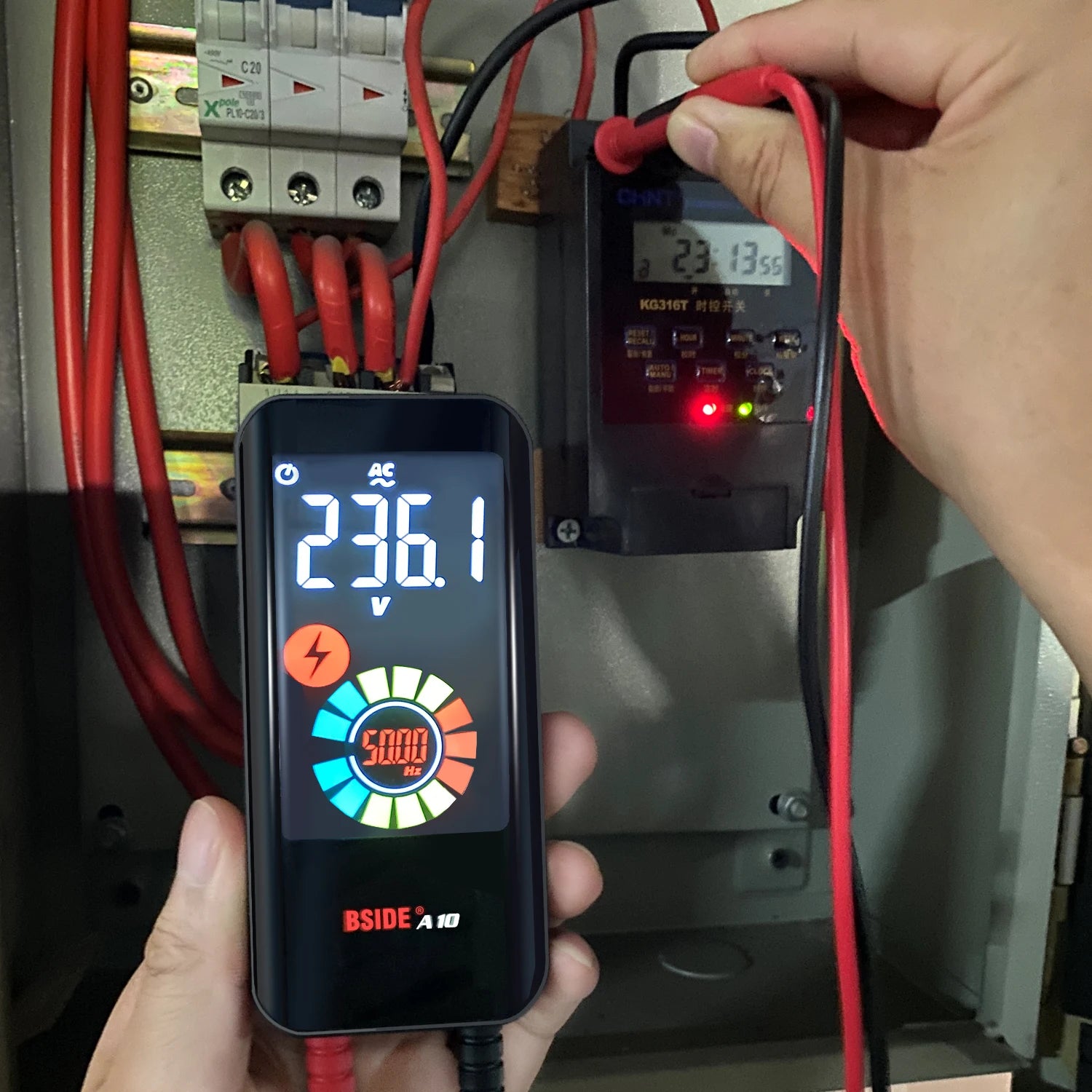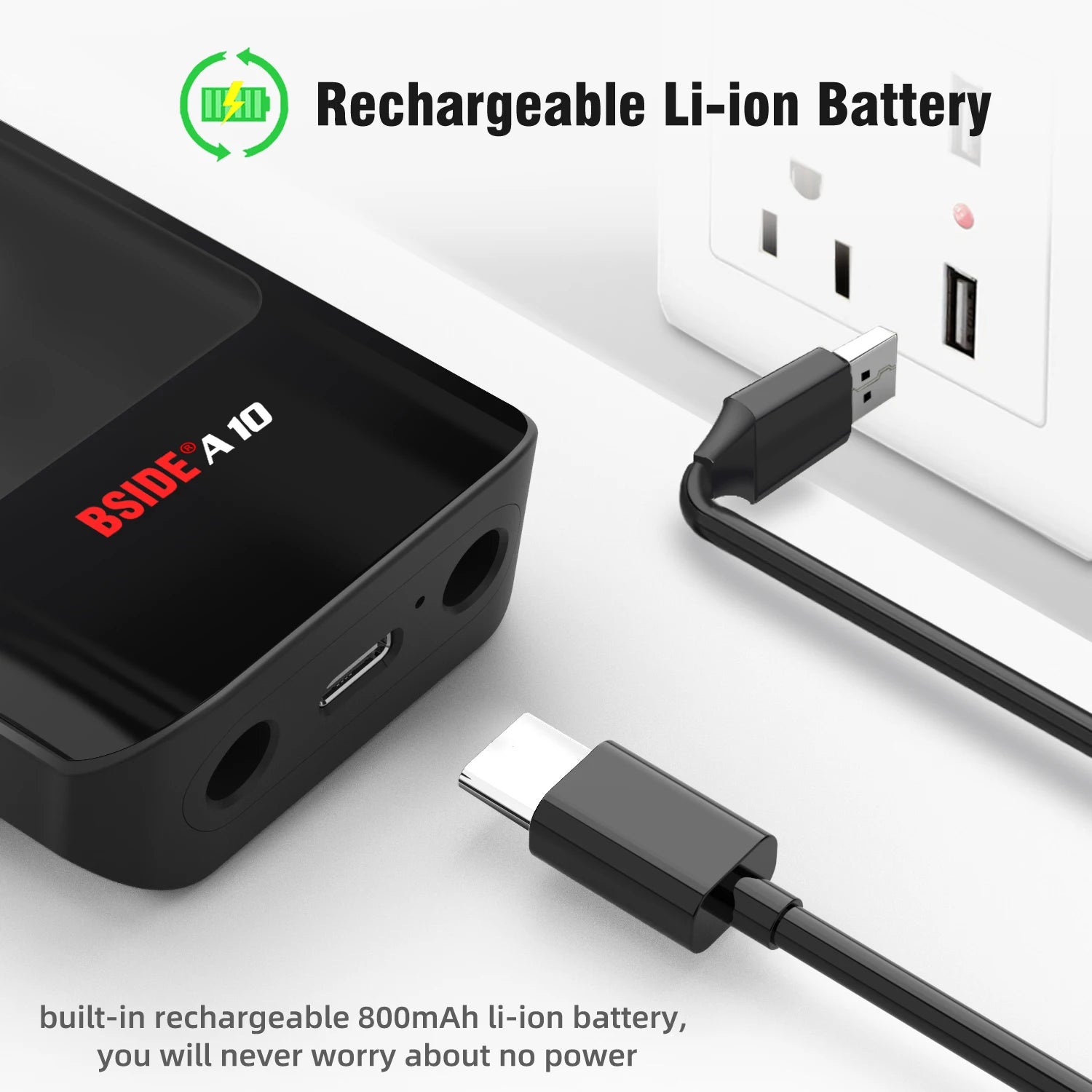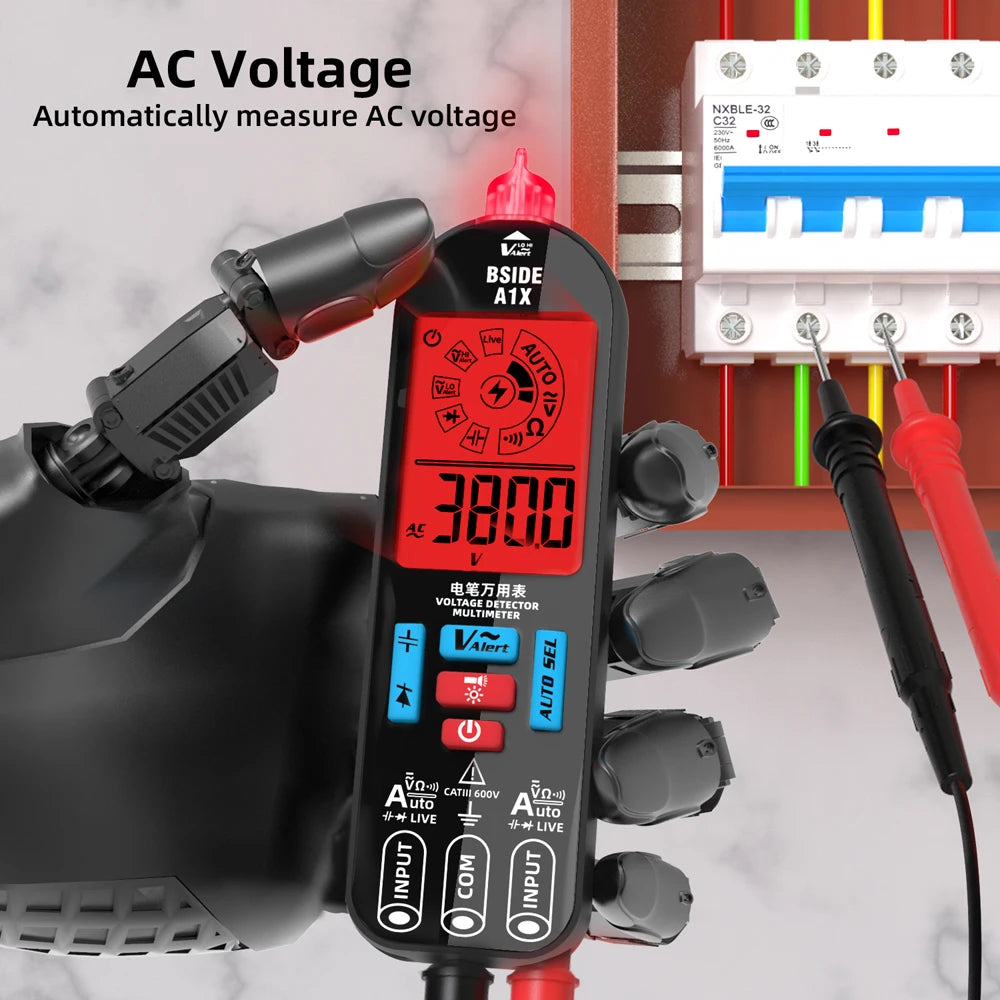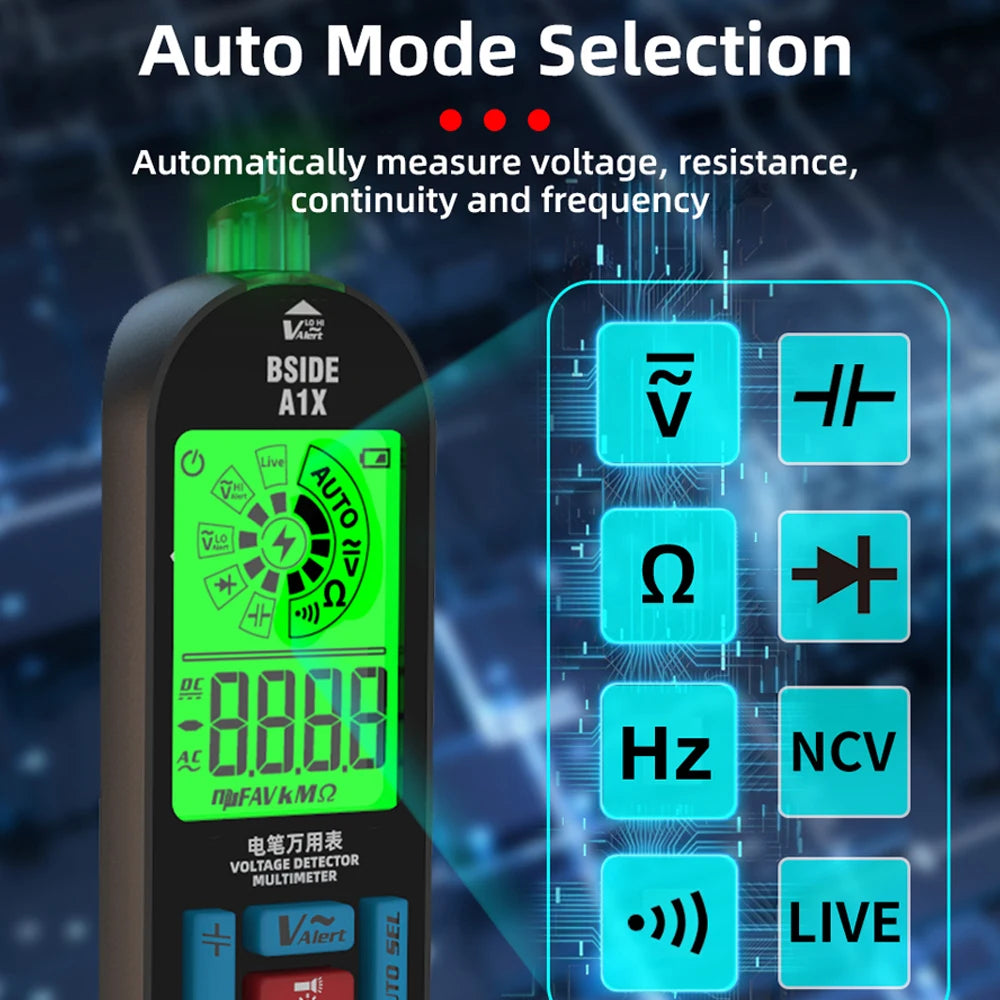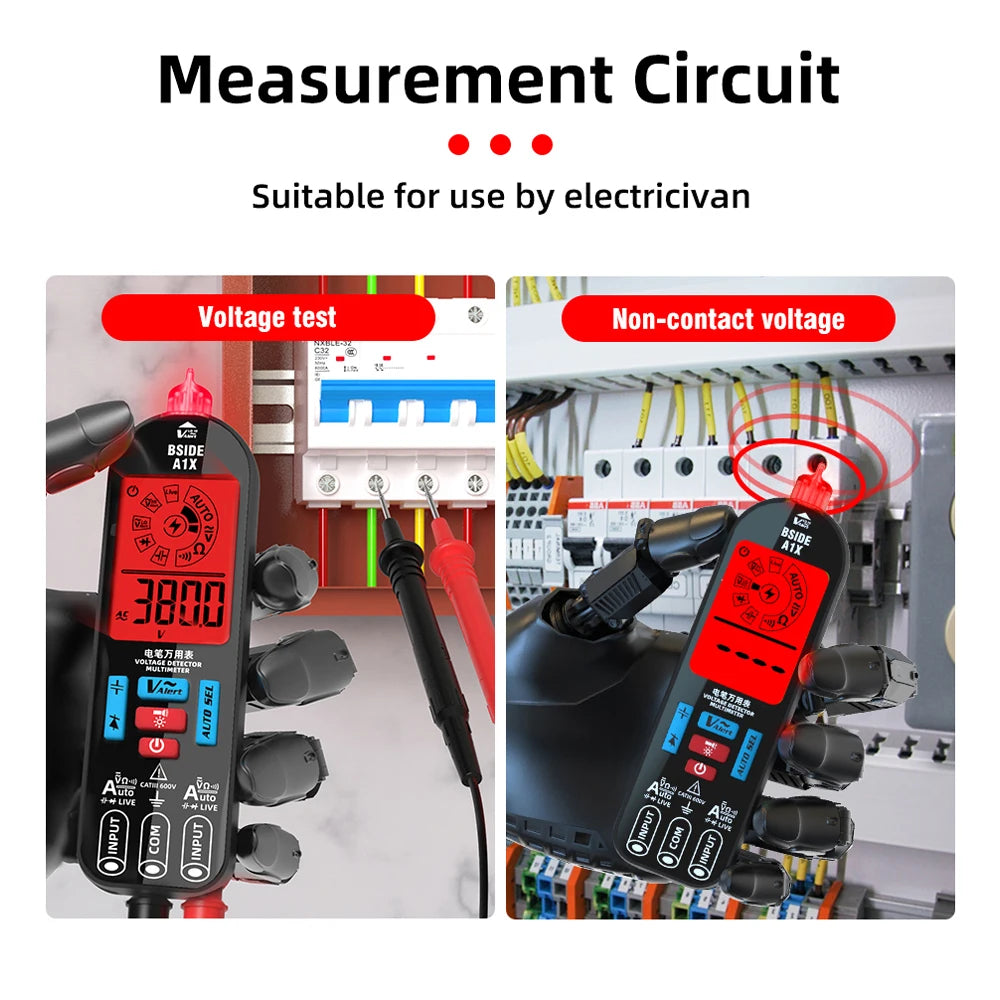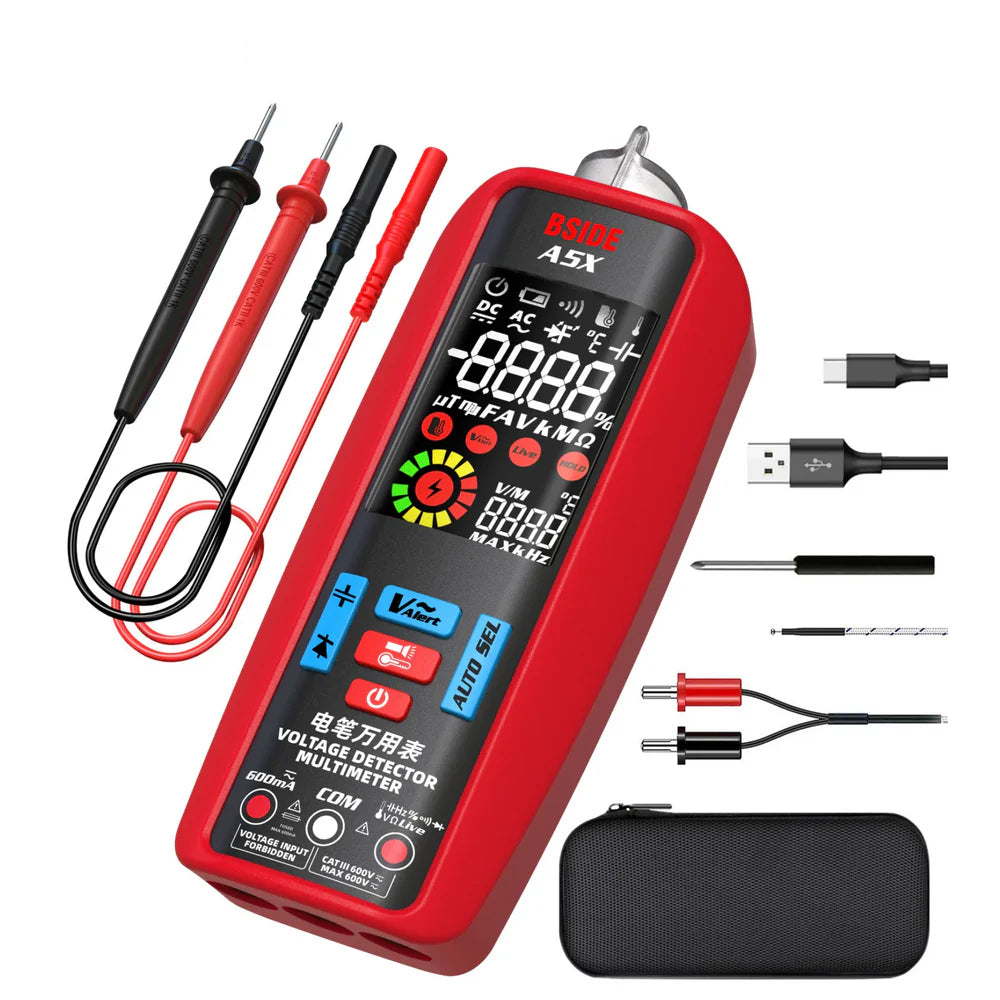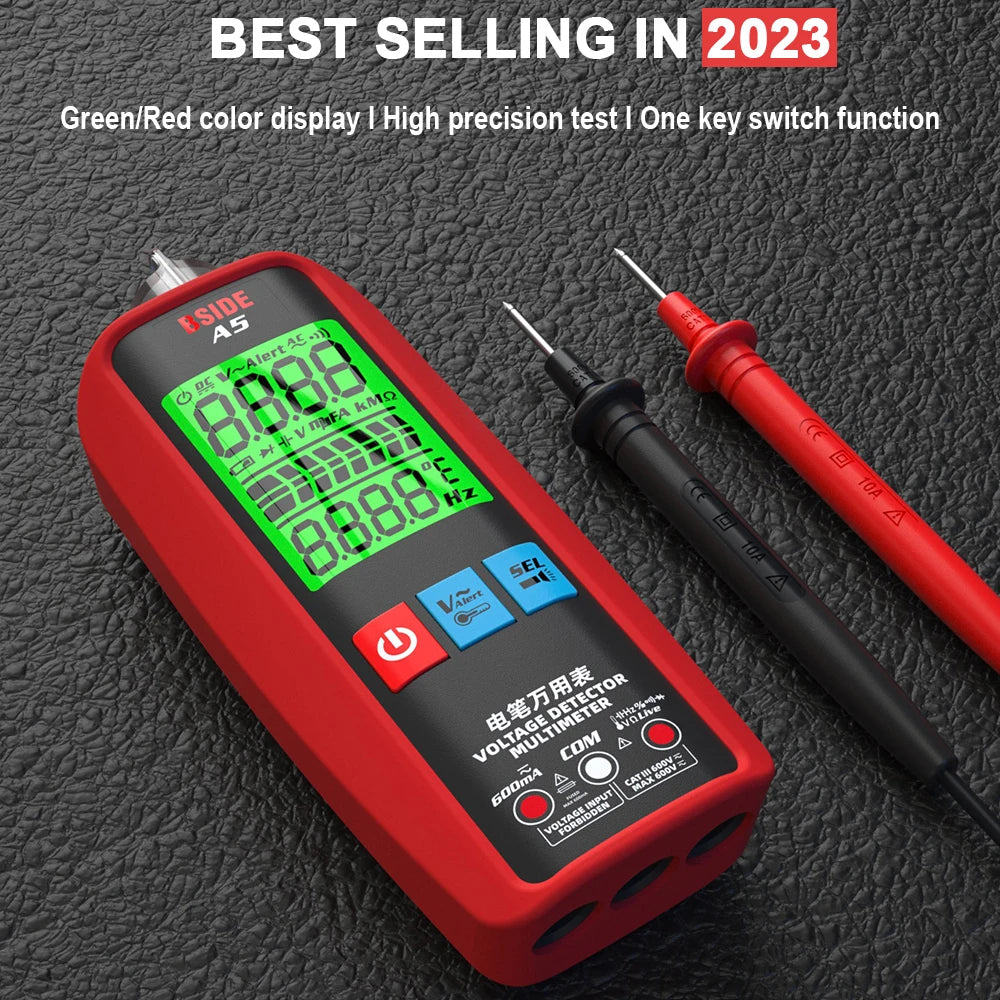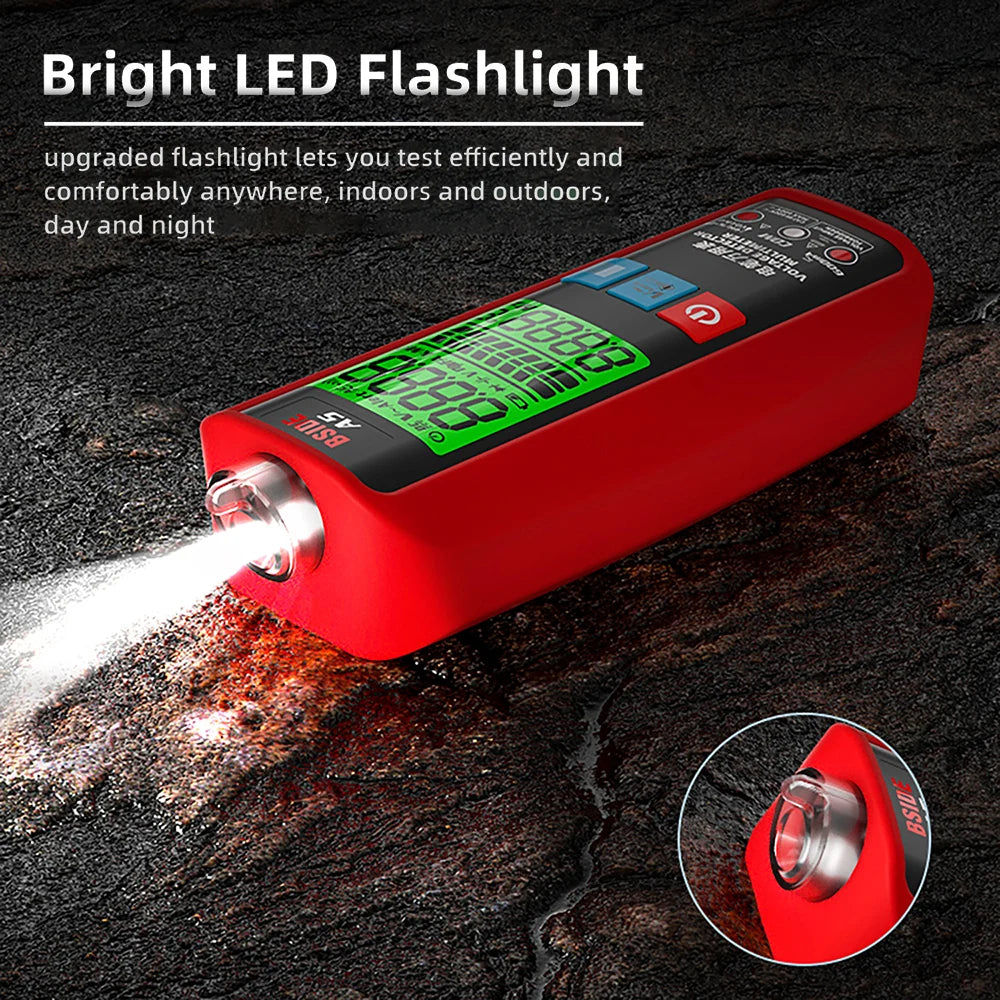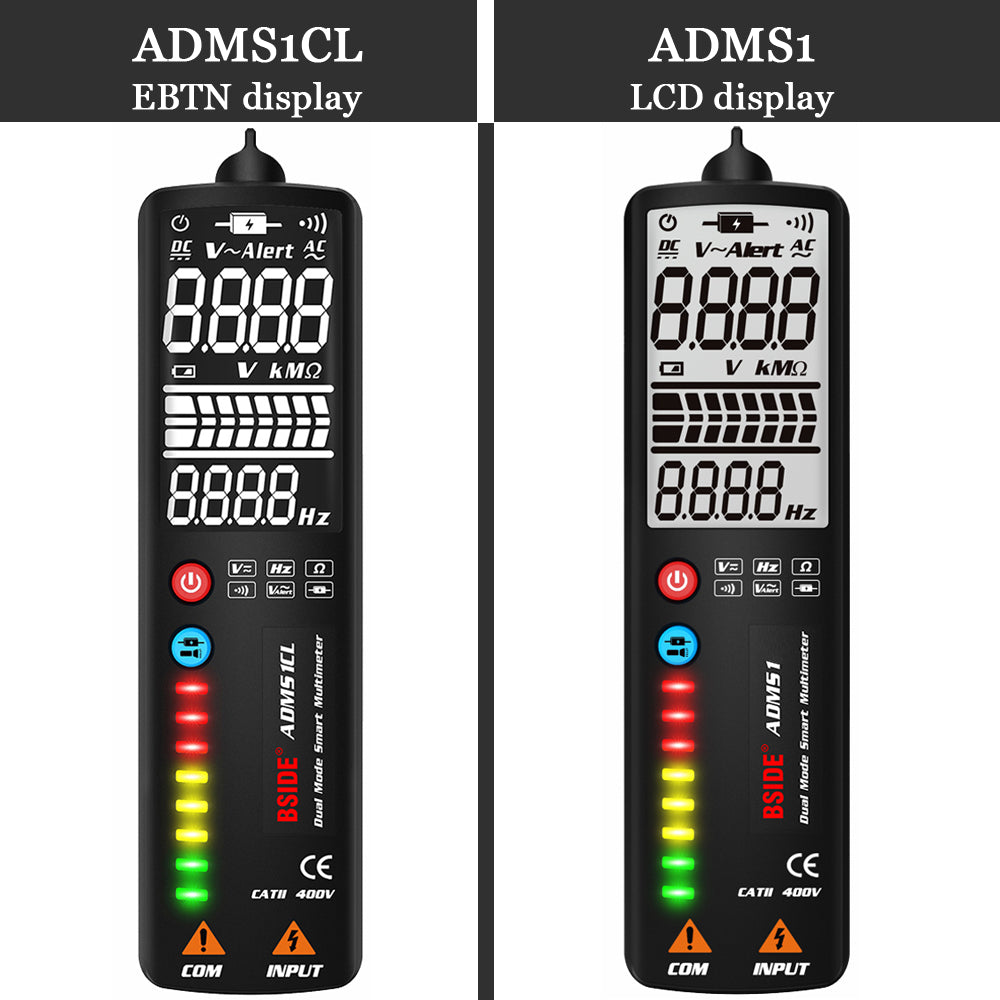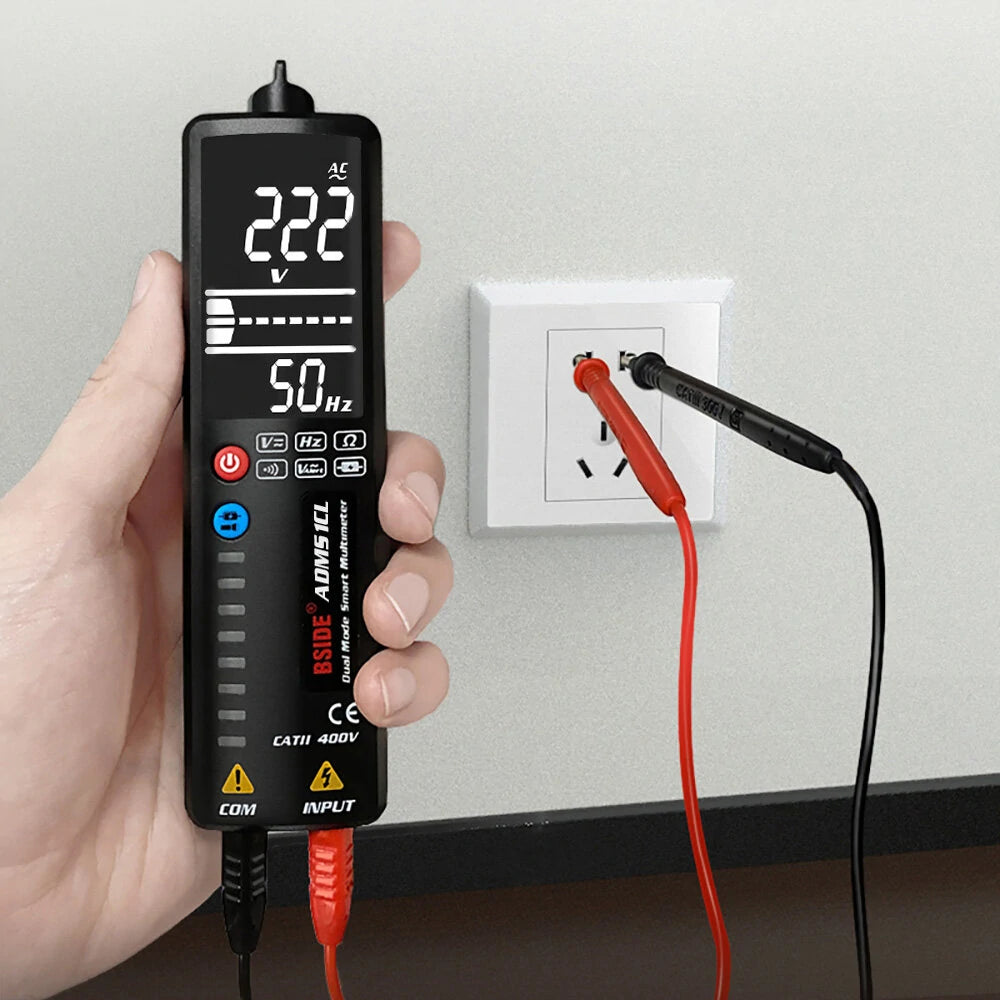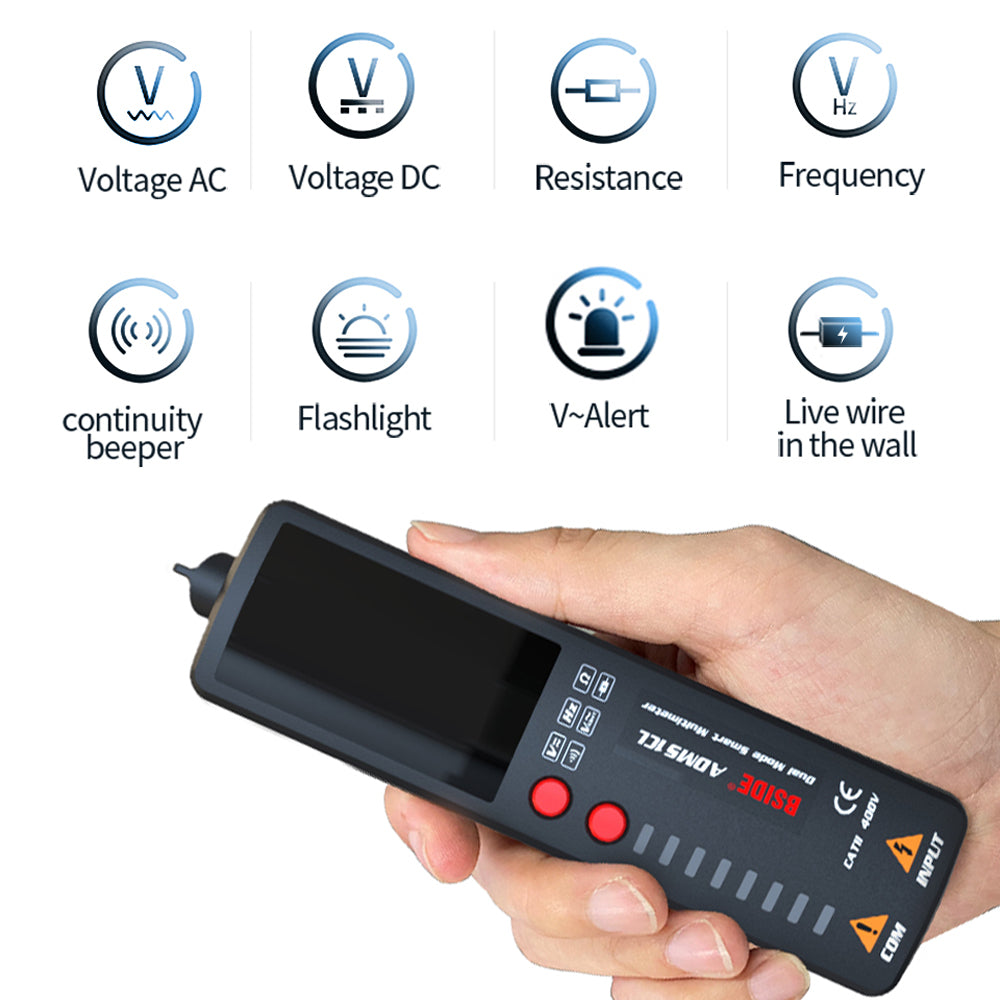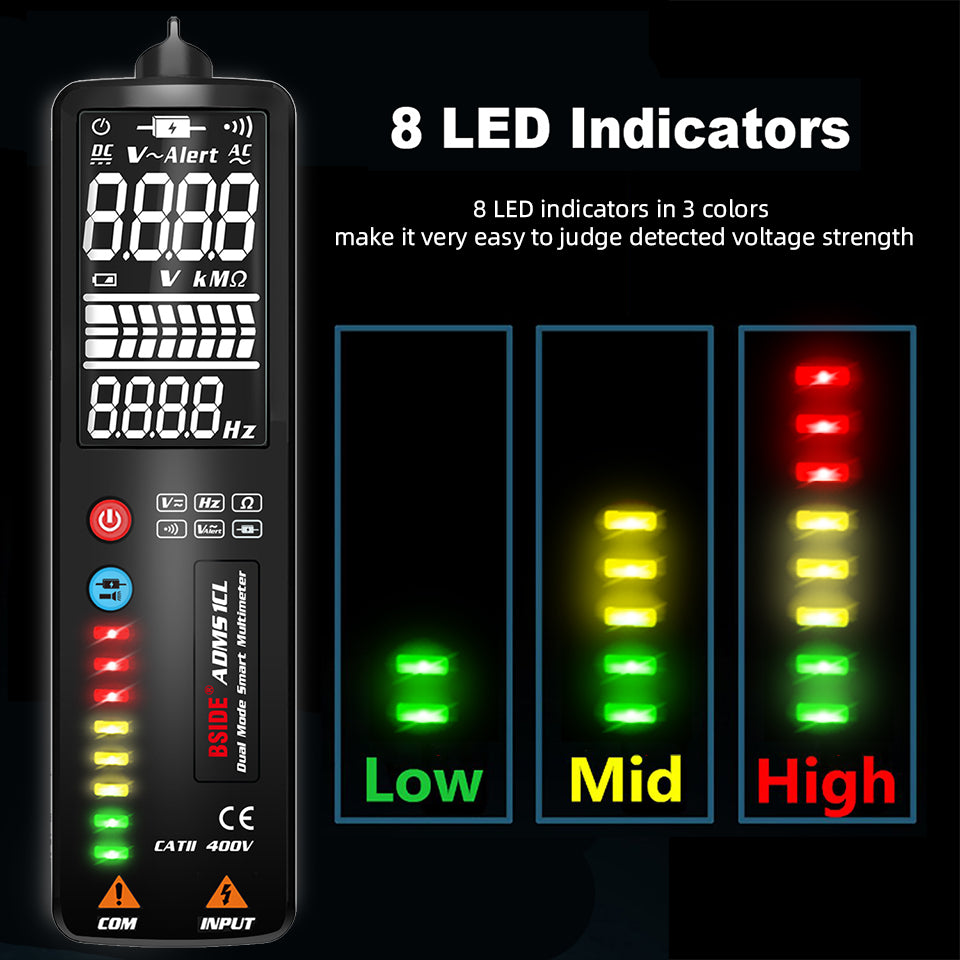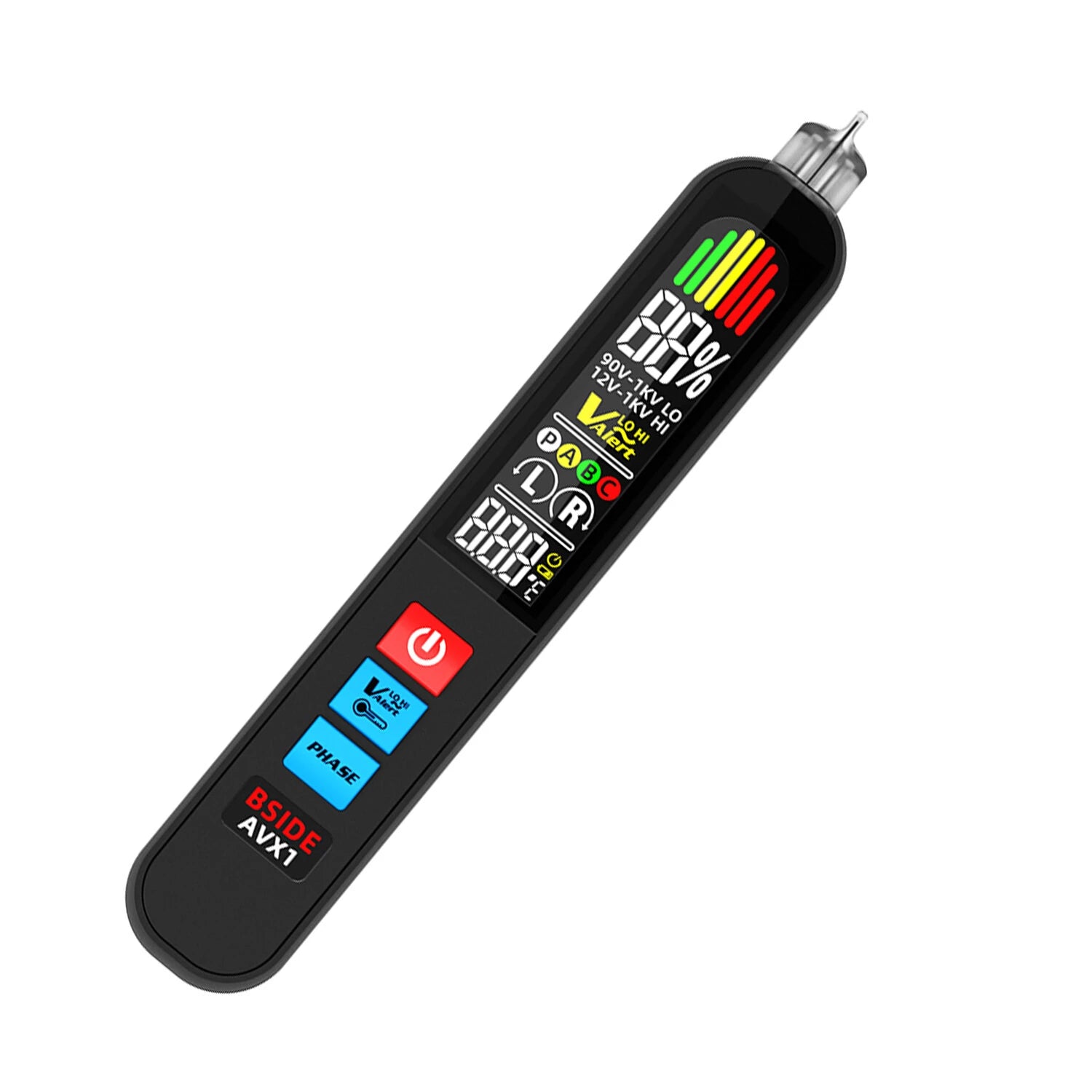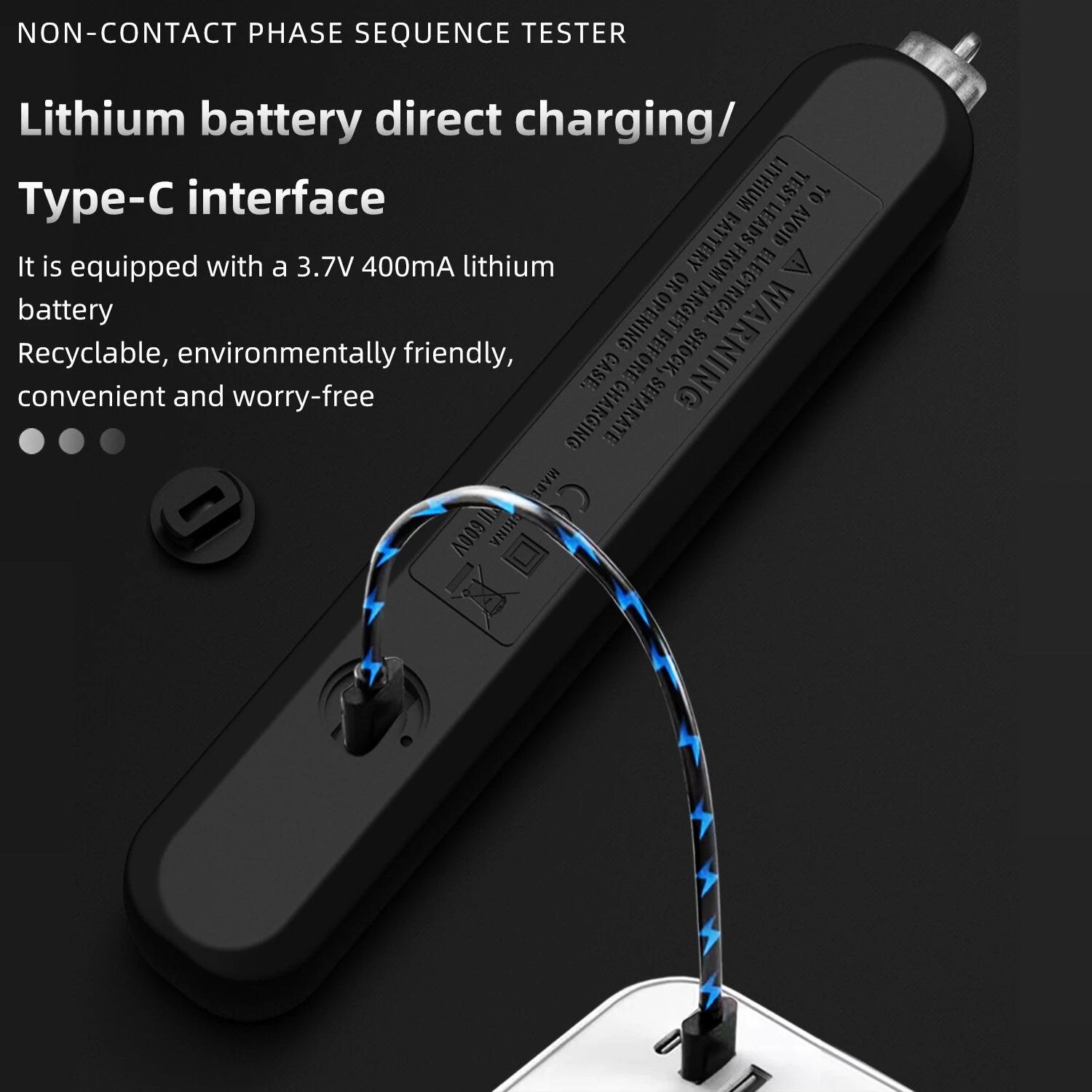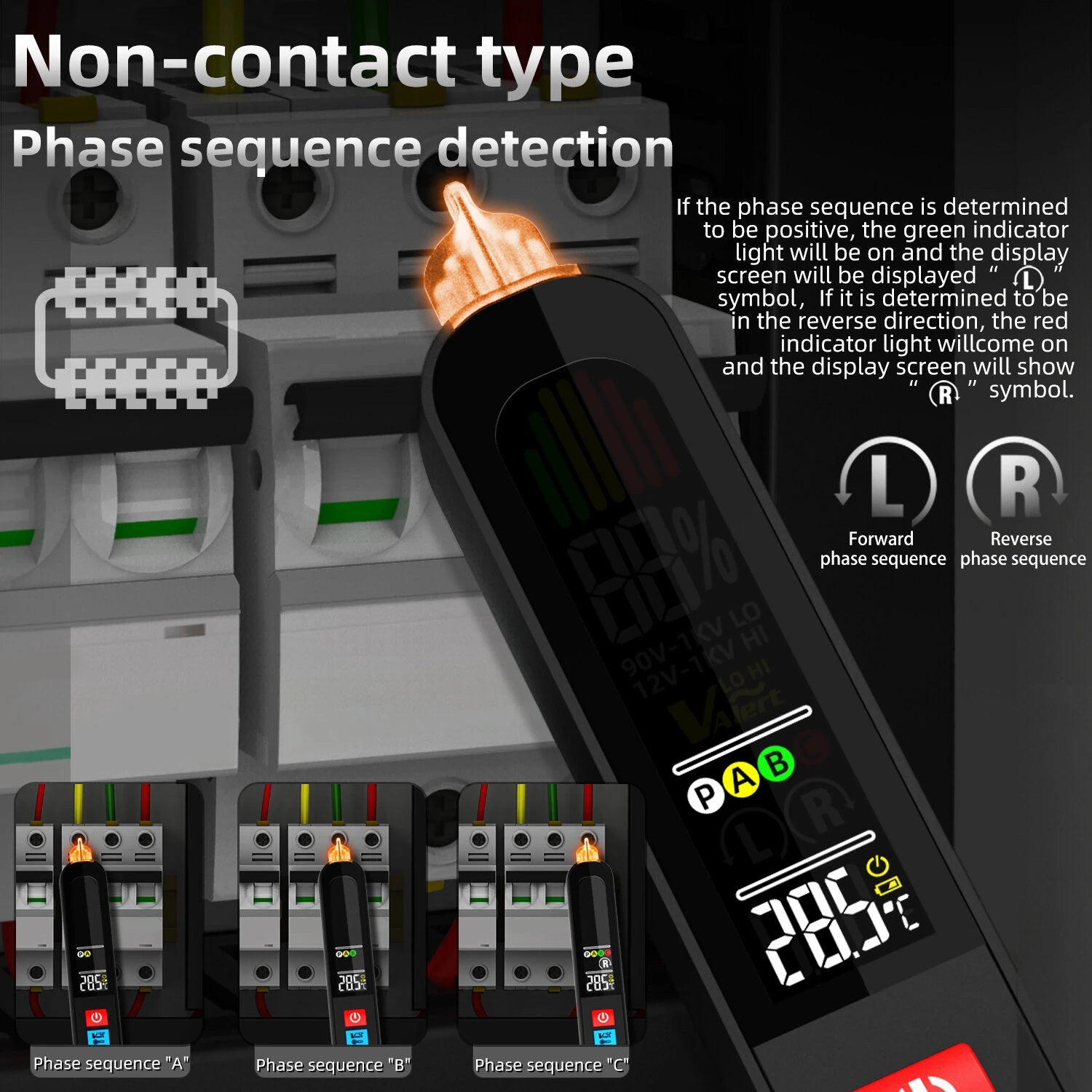🔧 Why a Multimeter Is Essential for Home Electrical Diagnosis
If your lights flicker, outlets don’t work, or breakers trip often, a digital multimeter is one of the safest and most effective tools for diagnosing wiring problems.
Multimeters help you:
-
Detect broken wires
-
Check outlet voltage
-
Test light switches
-
Verify circuit continuity
-
Stay safe while working with electricity
Let’s walk through how to use one step by step.
🧰 What You’ll Need
-
A digital multimeter (like BSIDE SH7 or S30)
-
Insulated test probes
-
Basic knowledge of your home’s electrical system
-
Safety gear (optional: gloves, goggles)
⚠️ Safety First Before You Test
Warning: Working with live circuits can be dangerous.
✅ Always:
-
Turn off power at the breaker (when checking continuity or resistance)
-
Use a multimeter with CAT II/III rating
-
Never touch exposed wires or probe tips
-
Test one hand at a time, keeping the other away from grounded metal
🪛 Step-by-Step: How to Troubleshoot Wiring with a Multimeter
🔌 Step 1: Test an Outlet for Power
-
Set your multimeter to AC Voltage (V~)
-
Insert the black probe into the neutral slot
-
Insert the red probe into the hot slot
-
A good outlet should read around 110–130V (US) or 220–240V (EU)
❌ No voltage?
-
Check the breaker
-
Test another known-good outlet
-
Continue to Step 2
🔄 Step 2: Check for Continuity in a Wire
Use this when the power is off.
-
Set your multimeter to continuity mode (🔔) or Ω (ohms)
-
Touch probes to each end of the wire
-
Listen for a beep or see a low resistance reading (e.g., 0–2Ω)
💡 No beep or high resistance = broken wire
🧲 Step 3: Test a Switch or Light Fixture
-
Turn power off
-
Disconnect the switch wires (if accessible)
-
Touch probes to each terminal
-
Toggle the switch:
-
Closed (ON) → 0Ω or beep
-
Open (OFF) → OL or no beep
-
📌 If readings are reversed or don’t change, the switch may be faulty.
💥 Step 4: Test Grounding and Neutral Integrity
-
With power ON, measure voltage:
-
Hot to Neutral: should be 120V (US)
-
Hot to Ground: should also be 120V
-
Neutral to Ground: should be near 0V
-
⚠️ If Neutral-to-Ground = high, there may be a grounding problem.
🧰 Bonus Tip: Identify a Tripped Breaker
Use your multimeter to check voltage after the breaker, or test continuity across the switch when it’s off. A tripped breaker often results in 0V output but may not look visibly off.
🛠️ BSIDE Multimeters Make It Easier
For homeowners and electricians, BSIDE smart multimeters simplify home wiring checks:
✅ Auto-ranging for fast setup
✅ Backlit dual display for dim environments
✅ Smart continuity and voltage detection
✅ Compact size for tight switch boxes
Recommended models:
-
BSIDE SH7 (Pro features + thermal imaging)
-
BSIDE S30 (Everyday testing)
-
BSIDE S11 (Beginner-friendly)
✅ Conclusion
A multimeter can help you find wiring issues faster, safely, and without calling an electrician for every flickering light. By following the steps above, you’ll be able to:
✔ Check outlets
✔ Test switches
✔ Verify wiring continuity
✔ Spot bad breakers or ground issues

